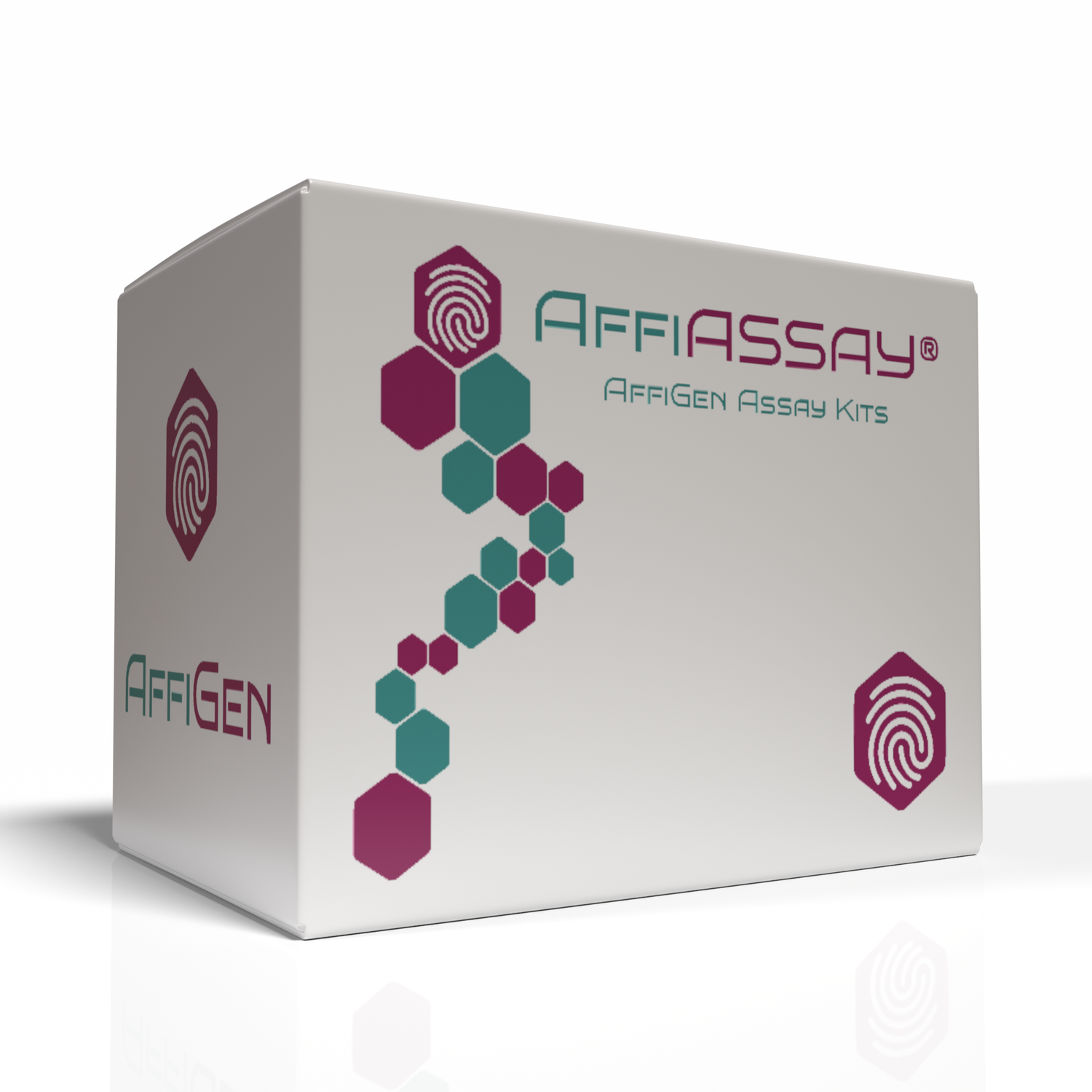MTT Cell Viability Assay Assay 1,000 assays
Internal Reference:
0037-30006
Website URL:
/shop/0037-30006-mtt-cell-viability-assay-assay-1000-assays-4730
Product Tooltip:
Consumables are physical products for which you don't manage the inventory level: they are always available.
Base Unit Name:
Units
Display Name:
[0037-30006] MTT Cell Viability Assay Assay 1,000 assays
Overview of MTT Cell Proliferation Colorimetric Assay Kit
Introduction The MTT Cell Proliferation Colorimetric Assay Kit is a widely used tool for evaluating cell viability, proliferation, and cytotoxicity in a variety of cell culture experiments. The assay is based on the reduction of the tetrazolium salt MTT (3-(4,5-dimethylthiazol-2-yl)-2,5-diphenyltetrazolium bromide) to formazan by metabolically active cells, a reaction that can be quantified by measuring absorbance. This assay is an essential method for researchers in cancer biology, drug discovery, and cell-based assay development, providing a straightforward, reliable, and quantitative measurement of cell growth and viability.
Principle of the Assay The MTT assay relies on the ability of viable, metabolically active cells to reduce the yellow MTT reagent to purple formazan crystals. The degree of reduction is directly proportional to the number of viable cells in culture, making this assay useful for measuring cell proliferation, metabolic activity, and cytotoxicity. The formazan product is solubilized in a solvent, and the absorbance is then measured using a microplate reader, typically at a wavelength of 570 nm. The intensity of the absorbance is directly proportional to the number of viable cells.
- MTT Reduction: Metabolically active cells, particularly those with functional mitochondria, reduce the MTT tetrazolium salt to insoluble formazan crystals. This reduction occurs via mitochondrial enzymes such as NAD(P)H-dependent dehydrogenases, which are present in cells undergoing active metabolism.
- Forazan Solubilization: After the MTT reduction reaction, the formazan crystals are solubilized with a suitable solvent (often dimethyl sulfoxide, DMSO), and the solubilized formazan is quantitated by measuring absorbance at 570 nm.
Kit Components
- MTT Reagent: This is the tetrazolium salt, typically provided as a dry powder or in a concentrated solution. The MTT reagent is diluted into a cell culture medium before being added to cells.
- Solubilization Solution: This solution is used to dissolve the formazan crystals after the reduction reaction. DMSO or isopropanol is commonly used as the solvent for this step.
- Assay Buffer: This is a buffered solution that helps maintain the proper pH and ionic conditions for the MTT assay to proceed effectively.
- Controls: Negative and positive controls are often included to validate the assay. The negative control typically consists of cells treated with a solvent (no treatment), while the positive control may involve a compound known to induce cell death or inhibition.
Assay Procedure
- Cell Seeding: Seed cells into a 96-well plate at a density that allows for confluence after the incubation period. The number of cells should be optimized for the specific cell type being used.
- MTT Addition: After cells are cultured for a designated period (usually 24–72 hours), add the MTT reagent to each well. Incubate the plate for 2–4 hours, allowing the cells to metabolize the MTT reagent into formazan crystals.
- Solubilization: After the incubation period, add the solubilization solution to each well to dissolve the formazan crystals. Incubate the plate at room temperature for an additional 10–15 minutes with gentle shaking.
- Measurement: Measure the absorbance of each well at 570 nm using a microplate reader. Optionally, background absorbance at 630 nm can be subtracted to ensure accuracy.
- Data Analysis: The absorbance values obtained correspond to the metabolic activity of the cells. For proliferating cells, absorbance will be higher, while for cytotoxic or apoptotic cells, absorbance will be lower. The data can be normalized to the negative control and compared across experimental conditions to assess cell proliferation, viability, or cytotoxicity.
Applications
- Cell Proliferation: The MTT assay is commonly used to measure the rate of cell growth or proliferation in response to various stimuli, such as growth factors, cytokines, or drug treatments. Researchers can assess the effects of different conditions on cell proliferation by measuring changes in formazan production over time.
- Cytotoxicity and Drug Screening: The assay is frequently used to assess the cytotoxicity of drugs, chemicals, or environmental toxins. By treating cells with different concentrations of a potential cytotoxic agent, researchers can determine the IC50 value (the concentration that inhibits 50% of cell viability).
- Toxicology Studies: In toxicology, the MTT assay is used to evaluate the cytotoxic effects of novel compounds or environmental pollutants on various cell lines. The ability to quickly assess cellular responses to chemicals makes the MTT assay a standard in safety testing and drug development.
- Cancer Research: In cancer research, the MTT assay is often used to evaluate the effectiveness of anticancer drugs and compounds. By assessing the reduction in cell viability in response to treatment, researchers can screen for promising anti-tumor agents.
- Cellular Metabolism Studies: The MTT assay can also be used as a measure of mitochondrial function, as mitochondrial enzymes play a key role in the reduction of MTT. Alterations in mitochondrial activity can be assessed under different physiological conditions.
Advantages
- Simplicity and Speed: The MTT assay is relatively simple to perform and yields results in a short amount of time (typically 4–5 hours), making it ideal for high-throughput screening.
- Quantitative: The assay provides quantitative data that can be used to determine the extent of cell proliferation or cytotoxicity, with results easily interpreted by measuring absorbance.
- Non-Radioactive: Unlike some other proliferation assays, the MTT assay is non-radioactive, making it safer and more environmentally friendly for routine laboratory use.
- Cost-Effective: The MTT assay is low-cost compared to other cell viability assays, such as those involving fluorescent dyes or complex instrumentation, making it ideal for many laboratories.
- Wide Application Range: The MTT assay can be used with various cell types, including adherent, suspension, and primary cells. It can also be adapted for use in a range of experimental settings, including multi-well plates and different cell culture formats.
Limitations
- Lack of Specificity: The MTT assay measures overall metabolic activity, but it does not specifically measure the cause of cell death (e.g., apoptosis vs. necrosis). For more detailed analysis, additional assays or methods may be required.
- Cell Type Variability: The reduction of MTT to formazan can vary across different cell types, making it essential to optimize conditions for each specific cell line used.
- Interference from Other Substances: Some treatments or chemicals may interfere with the MTT assay, either by directly reducing MTT themselves or by interfering with formazan solubilization. This limitation can sometimes be mitigated by using appropriate controls and solvents.
- End-Point Measurement: Since the MTT assay is an end-point measurement, it does not provide dynamic information about cell proliferation during the entire culture period. For continuous monitoring of cell growth, other methods such as cell counting or real-time impedance measurement may be more suitable.
Conclusion
The MTT Cell Proliferation Colorimetric Assay Kit is a reliable, widely used method for assessing cell viability and proliferation. Its ease of use, rapid results, and cost-effectiveness make it an indispensable tool for researchers in drug development, cancer research, toxicology, and cell biology. By quantifying cellular metabolic activity, the MTT assay allows researchers to evaluate the effects of various treatments on cell growth, viability, and overall cellular health. However, for more specific information on cell death pathways or real-time analysis, complementary assays may be required.

